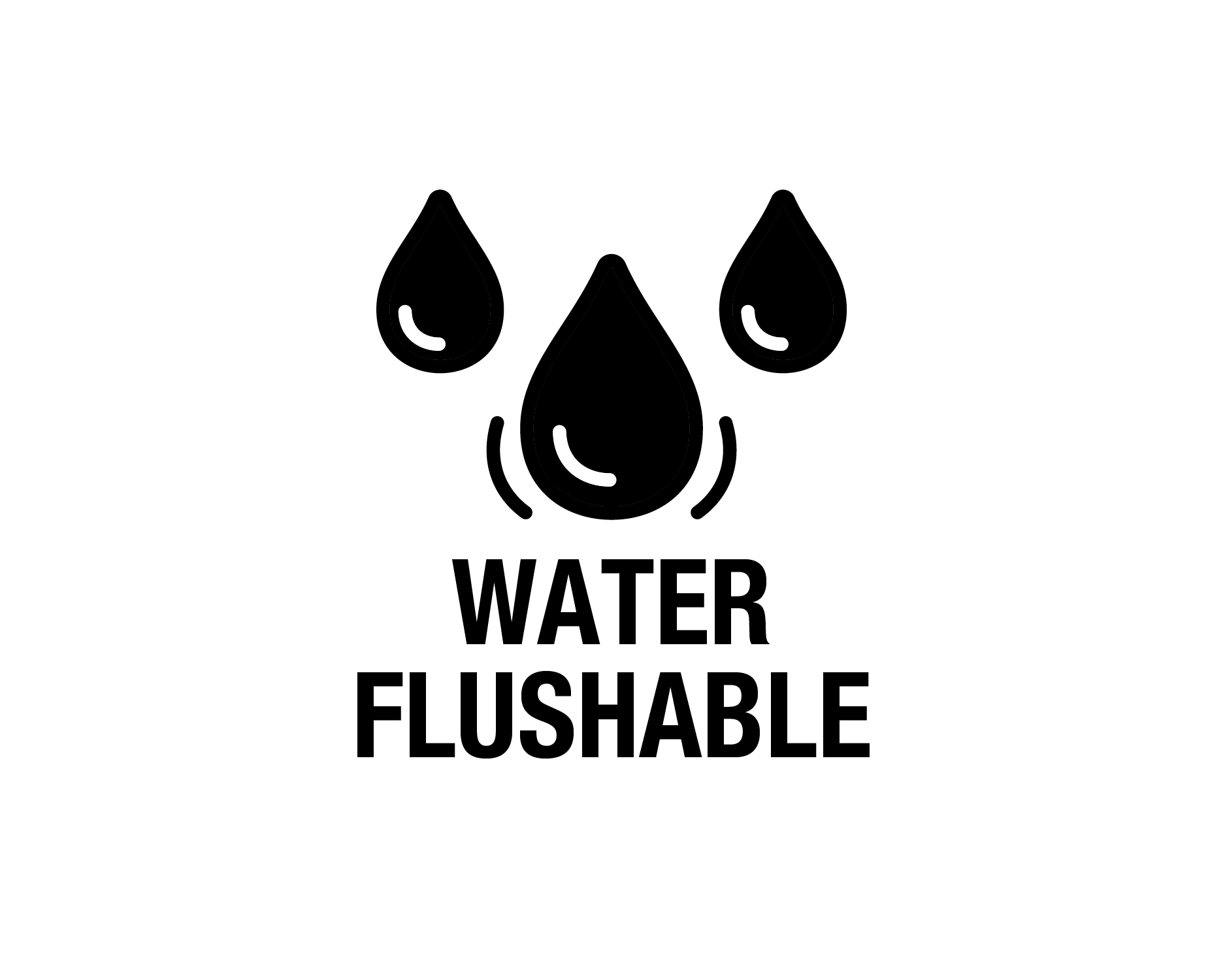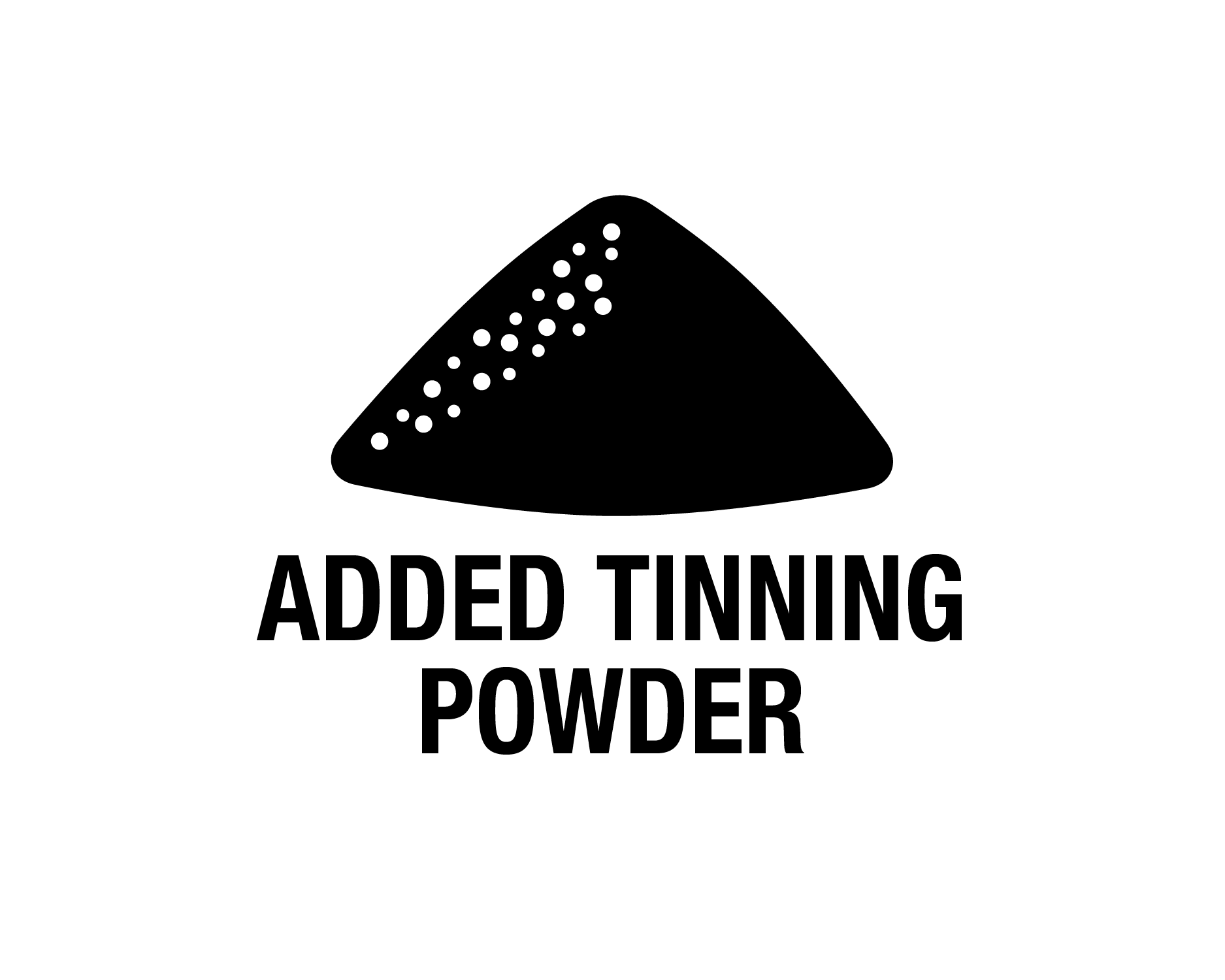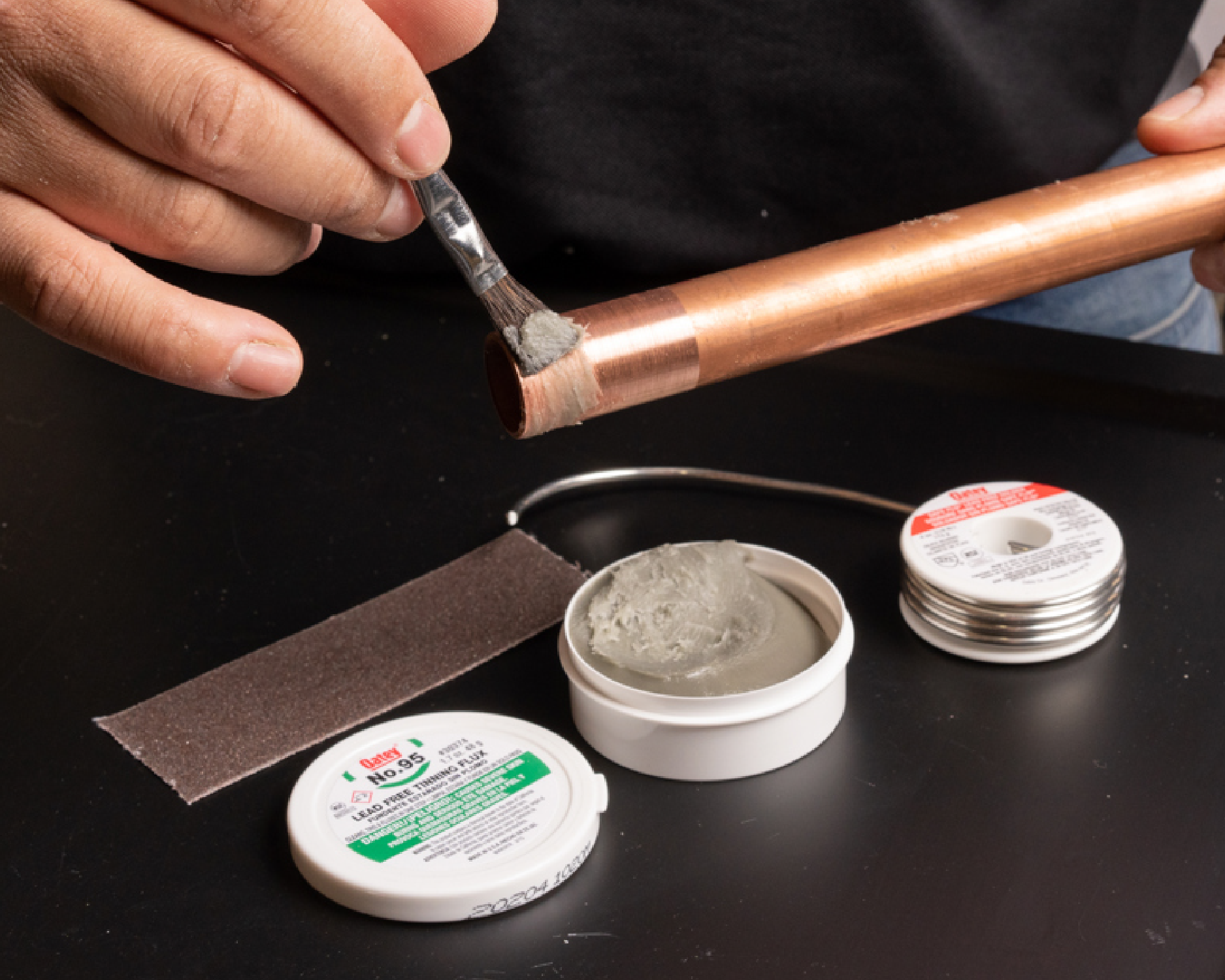When soldering copper piping, using the right flux makes a big difference in the quality and integrity of your soldered joint. The right flux will clean the copper surface, prevent oxidation during heating, and help draw solder into the joint.
Selecting the proper flux can directly impact the smoothness and strength of your solder joints. The wrong flux can lead to issues such as incomplete filling, discoloration, or even flux entrapment, all of which can deteriorate the joint over time.
This guide explains how to choose the best plumbing flux for soldering copper pipes, comparing water-soluble, tinning, and petroleum-based fluxes. It also provides application tips and advises when to use each based on your experience level and project needs.
What Is Flux and Why Does It Matter?
Flux is a chemical cleaning agent used in the soldering process. It is more than just a necessary precursor to soldering; it is a critical component in ensuring the integrity of your joints. Acting as both a cleaning and wetting agent, flux preps the surfaces to be joined, effectively aiding in the flow of solder.
The role of flux is to eliminate oxidation, a common barrier to achieving a solid, leak-free connection. For the uninitiated, imagine it as akin to applying a primer before painting: This invisible assistant ensures your end product is robust and complete.
Oatey offers a comprehensive selection of fluxes tailored to different requirements and work environments.
Soldering Flux Types
Oatey fluxes are 100% lead-free, listed to NSF/ANSI/CAN 61, and available in various formulas, including water-soluble, tinning, and petroleum-based, to meet the needs of different copper installation applications.
Water-Soluble vs Petroleum-Based Flux
When soldering, it’s common for flux residue to be left inside the pipe. While all Oatey fluxes are safe for use with potable water, some individuals may detect a slight odor or taste if the plumbing lines weren’t flushed adequately after soldering.
With a water-soluble option, like Oatey® H2O No. 5 Paste Flux, simply running water through the pipe easily breaks down the flux and flushes it out. Because it dissolves in water, it’s easily flushed from the piping system without requiring a flushing solution, eliminating residue, taste, or odor—a key advantage over petroleum-based options. This type of flux is often used in new construction or large-scale potable plumbing jobs, where flushing the system is required. It’s also a go-to when minimal cleanup is preferred.

Petroleum-based fluxes—such as Oatey® 5 Paste Flux and No. 95 Tinning Flux—have long been trusted by plumbing professionals for their proven performance and reliability across a wide range of applications.
While petroleum-based flux is NSF/ANSI/CAN 61 certified for potable water systems, it is non-water soluble. That means a more thorough flushing process is required to remove any residue entirely. This typically involves circulating a flushing solution—like tri-sodium phosphate (TSP)—for optimal results. Although this step adds time, it ensures a clean, taste- and odor-free outcome when used in drinking water lines.
Tinning Flux vs Regular Flux
Tinning flux contains a small amount of solder powder and is engineered to clean the pipe and pre-tin the fitting. This can be extremely helpful for beginners or those working in a hurry. Pre-tinning simplifies the process by promoting better adhesion and quicker joint filling. Tinning flux helps eliminate small mistakes and acts as an insurance policy to prevent improper soldering.
The choice between tinning flux and regular flux should be guided by the project’s specific needs and the skill level of the individual performing the work. Tinning flux is particularly useful for soldering low- or no-lead brass effectively. Read more on that here.
Tinning flux is available in both water-soluble and petroleum-based formulas. Oatey® No. 95 Tinning Flux is a petroleum-based and reliable choice for professional plumbers seeking a flux that ensures thorough cleaning and effective soldering. It acts as a solder powder, filling gaps on imperfectly fitted parts, which makes it valuable for suboptimal joints. Suitable for various solders and accommodating a wide temperature range, it offers flexibility in different plumbing applications.
Oatey® H2O No. 95 Water Soluble Tinning Flux is excellent for professionals seeking both the precision of tinning flux and the ease of water solubility. This formula provides the same high-quality cleaning and tinning properties as other Oatey tinning fluxes while ensuring that any residues can be effortlessly washed away with water after soldering.

Flux Selection by Application
When choosing a flux, consider factors such as your experience level, the nature of the joint itself, and the environmental conditions of the working area.
| Use Case/Application | Recommended Product | Why It Works |
|---|---|---|
| Beginners / Learning to Solder | Oatey® No. 95 Tinning Flux | Contains built-in solder to help fill gaps and compensate for minor prep or technique errors. |
| Larger Joints / Brass Fittings | Oatey® No. 95 Tinning Flux | Larger joints require enhanced solder flow—tinning flux provides excellent fill performance. |
| Hot or Variable Weather | Oatey® No. 5 Hot Weather Flux Hercules® Climate Smooth Soldering Paste (high or low temperatures) |
Designed to withstand extreme temperature environments. Reduces the risk of overheating and weakened joints. |
| HVAC and Electrical Work, Jewelry/Crafting | Oatey® No. 11 Liquid Flux | Formulated with a strong cleaning agent to remove corrosion quickly and effectively from pipe surfaces in HVAC and electrical work. Easy to apply thanks to its squeeze bottle narrow spout, which helps keep contaminants out and speeds up application—ideal for detailed work or repetitive tasks. |
| Overhead / Vertical Soldering, ASTM B-813 | Hercules® Jel-Flux™ | No-drip, gel-like consistency stays where applied—ideal for jobs that require maximum control with minimal cleanup. Comes with a dauber, is water-soluble and is a low-smoke/odor formula. It meets ASTM B-813, which is sometimes required depending on the project or location. |
How to Apply Flux Correctly
Applying flux properly is just as important as choosing the right type. It ensures the solder flows smoothly, fills the joint evenly, and forms a strong, leak-proof seal.
Flux acts as a wetting agent, breaking surface tension and preventing oxidation as the metal heats. Using a lot of flux is tempting, thinking it will improve the soldering process. However, too much flux can lead to severe problems.
Image: Flux being applied showing Oatey product (existing)
For more mistakes to avoid during the soldering process, read this.

Quick tips to apply flux correctly:
- Use an acid brush to apply a thin, even layer of flux to both the pipe's outside and the fitting's inside. Be precise—slathering on excess flux won’t improve the bond and may actually interfere with solder flow. Remove any excess flux.
- Avoid touching fluxed surfaces with your bare hands. Oils and dirt from your skin can contaminate the joint and disrupt proper adhesion. If possible, wear gloves or handle the prepped pipe carefully on unfluxed areas.
- Assemble the joint and proceed with heating, allowing the solder to flow into the connection by capillary action.
Need a refresher? Check out our How to Solder Copper Pipes project guide.
Frequently Asked Questions
-
What is the best flux for soldering copper pipe?
-
Oatey® No. 95 Tinning Flux is ideal for beginners or brass fittings. Oatey® H2O No. 5 Paste Flux is preferred for potable systems because it is water flushable and allows easier cleanup.
-
-
What’s the difference between tinning and regular flux?
-
Tinning flux includes solder powder. It pre-tins the joint and supports better solder flow, which is especially helpful for beginners or for making larger joints. Regular flux does not contain solder and is preferred by experienced plumbers who want full control over solder placement and volume.
-
-
Can I use petroleum-based flux on drinking water lines?
-
Yes—but only if you thoroughly flush the system with a cleaning solution after installation.
Want to make sure you’re also using the right solder? Check out our Types of Solder blog to complete your copper connection.
-